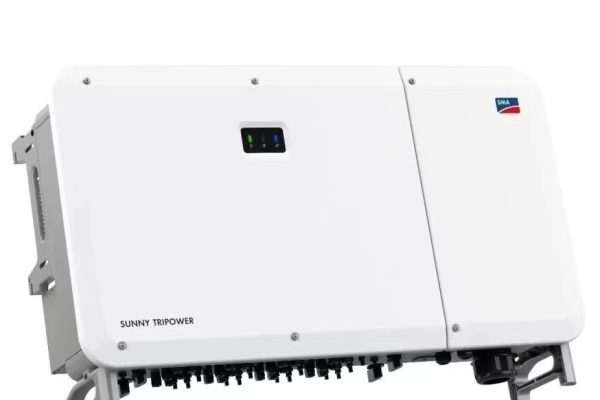In every solar + storage system, one small but powerful technology determines how much sunlight is actually turned into usable energy — MPPT, or Maximum Power Point Tracking.
When integrated into hybrid inverters, MPPT plays a critical role in ensuring both solar panels and lithium batteries perform at their best.
But how does MPPT really work? And what should buyers look for in an inverter’s MPPT specifications?
This article explains the function, benefits, and design importance of MPPT in hybrid inverters — so you can choose smarter and optimize your energy system effectively.
1. What Is MPPT?
MPPT (Maximum Power Point Tracking) is an algorithm that continuously adjusts the inverter’s operating voltage and current to extract the maximum possible power from the solar array.
Each solar panel has a unique I-V curve — showing how much current it produces at different voltages.
The maximum power point (MPP) is the sweet spot where voltage × current = maximum wattage.
☀️ MPPT is like a smart gearbox — always keeping the solar array at its most efficient operating speed.
2. Why MPPT Is Essential in Hybrid Inverters
In hybrid systems, the inverter must handle two energy sources simultaneously:
- Solar PV (DC input from panels)
- Battery (DC input/output for charging and discharging)
MPPT ensures the solar side delivers maximum energy, even as conditions change throughout the day.
Key MPPT Functions:
- Track solar voltage and current in real-time
- Adjust DC/DC converter to maintain optimal power point
- Prevent undercharging or overvoltage of batteries
- Balance multiple PV strings for consistent energy flow
Without MPPT, a hybrid inverter would simply take a fixed DC voltage — wasting 10–30% of available solar power.
⚡ MPPT turns a basic inverter into an intelligent solar optimizer.
3. How MPPT Works (Simplified)
- The inverter measures real-time PV voltage (V) and current (I).
- It calculates power (P = V × I).
- The control algorithm slightly adjusts the DC voltage.
- If power increases, the inverter continues in that direction.
- If power decreases, it reverses.
- The process repeats several times per second to stay at the maximum point.
This dynamic tracking happens hundreds of times per second — continuously optimizing performance as sunlight intensity, temperature, and shading fluctuate.
🔍 Modern inverters use advanced MPPT chips or digital DSP processors for ultra-fast tracking.
4. Single vs. Multiple MPPT Inputs
When reading inverter datasheets, you’ll often see:
- Single MPPT
- Dual MPPT
- Multi-MPPT (3 or more)
✅ Single MPPT
- Cheapest, simplest design
- Suitable for uniform rooftop panels (same tilt and direction)
✅ Dual MPPT
- Allows two independent PV strings
- Ideal for east-west roofs or mixed panel layouts
✅ Multi-MPPT (3–10 trackers)
- Found in high-end commercial or C&I systems
- Improves yield for complex installations or partial shading
🌞 For residential hybrid systems (3–10kW), dual MPPT is the sweet spot between cost and flexibility.
5. MPPT Voltage Range Explained
The MPPT voltage range defines the operating window in which the inverter can track maximum power effectively.
| Parameter | Description | Typical Range |
|---|---|---|
| Start-up Voltage (V) | Minimum PV voltage required to start inverter | 100–150V |
| MPPT Working Range (V) | Voltage window for power tracking | 120–550V |
| Max PV Voltage (Voc) | Absolute limit for safety | 600–1000V |
💡 Your PV string voltage (Vmp) should fall within the middle of the MPPT range for best results.
6. The Role of MPPT in Battery Charging
In hybrid inverters, MPPT doesn’t just optimize the solar side — it also affects how efficiently the battery is charged.
- When PV input fluctuates, MPPT stabilizes DC output to the battery.
- It prevents voltage spikes that could trigger BMS protection.
- It ensures constant current charging during peak hours.
This balance leads to:
- Higher charging efficiency (94–97%)
- Longer battery life
- Reduced inverter stress
🔋 MPPT acts as a “smart bridge” between the unpredictable PV source and the precise battery system.
7. Factors That Affect MPPT Performance
| Factor | Impact | Solution |
|---|---|---|
| Panel temperature | Hot panels reduce voltage → less MPPT headroom | Choose wider MPPT range |
| Partial shading | Causes multiple power peaks | Multi-MPPT or module-level optimizers |
| String mismatch | Uneven voltage between arrays | Equalize panel types/orientations |
| Dust or aging | Reduces PV current | Regular cleaning and maintenance |
| Firmware quality | Poor MPPT algorithm = lower yield | Use proven inverter brands |
⚙️ MPPT efficiency depends 50% on hardware design, 50% on algorithm quality.
8. MPPT Efficiency — What the Numbers Mean
Datasheets often list:
- MPPT Efficiency: 99%–99.9%
- Tracking Accuracy: ±0.5%
These indicate how close the inverter stays to the actual maximum power point.
A 99.5% MPPT efficiency means only 0.5% of solar energy is lost during real-time tracking.
That’s equivalent to gaining several extra days of production per year.
📈 Even a 0.3% MPPT improvement can add 30–50 kWh per year for a 10kW system.
9. Comparing MPPT Across Inverter Types
| Inverter Type | Typical MPPT Channels | Efficiency | Application |
|---|---|---|---|
| String Inverter | 1–2 | 98–99% | Homes, small businesses |
| Hybrid Inverter | 2–3 | 97–98% | PV + battery systems |
| Central Inverter | 4–10 | 98–99% | Utility-scale |
| Microinverter | Per panel | 96–97% | Residential rooftops |
🔧 Hybrid inverters balance MPPT optimization for both PV and battery sides — requiring careful design.
10. Buyer’s Checklist for MPPT Evaluation
Before selecting a hybrid inverter, check the following:
- MPPT Voltage Range — does your PV string fall within it?
- Number of MPPT Inputs — suitable for your roof layout?
- Max PV Input Power — can it handle slight PV oversizing?
- Max Input Current per MPPT — enough for modern 550W+ panels?
- MPPT Efficiency (%) — ideally ≥99%
- PV Start Voltage — low enough for early-morning startup
- Communication Port (for monitoring) — MPPT data visibility
📊 Good inverters show live MPPT tracking curves on apps or LCDs — a sign of advanced control.
11. Common Buyer Mistakes
| Mistake | Result | Prevention |
|---|---|---|
| ❌ Choosing inverter with narrow MPPT range | Power loss in winter or hot weather | Select wider range (120–550V+) |
| ❌ Mixing PV panels with different specs | Uneven power yield | Use same brand/wattage |
| ❌ Ignoring MPPT current limit | Overload risk | Check “Max input current” per tracker |
| ❌ Under-sizing PV array | Battery undercharged | Follow PV:kWh sizing ratio |
| ❌ No shading analysis | Energy loss | Use dual-MPPT or optimizers |
12. The Future of MPPT Technology
Next-generation hybrid inverters are integrating smarter MPPT features:
- AI-based predictive MPPT to anticipate irradiance changes
- Per-string optimization for large commercial systems
- Adaptive MPPT for bifacial and high-voltage panels
- Real-time data logging via cloud-based EMS platforms
🌍 Future ESS systems will rely on MPPT not only for energy harvesting but also for predictive energy management.
MPPT is more than a technical detail — it’s the core intelligence that makes solar + storage systems efficient and reliable.
✅ Key Takeaways:
- MPPT ensures your inverter extracts maximum solar power under all conditions.
- Dual or multi-MPPT designs are best for modern rooftops and hybrid systems.
- MPPT efficiency above 99% means minimal energy loss.
- Always check voltage range, input current, and PV string compatibility.
When evaluating hybrid inverters, MPPT specs tell you more about real-world performance than any marketing slogan — because sunlight is valuable, and every watt counts.









